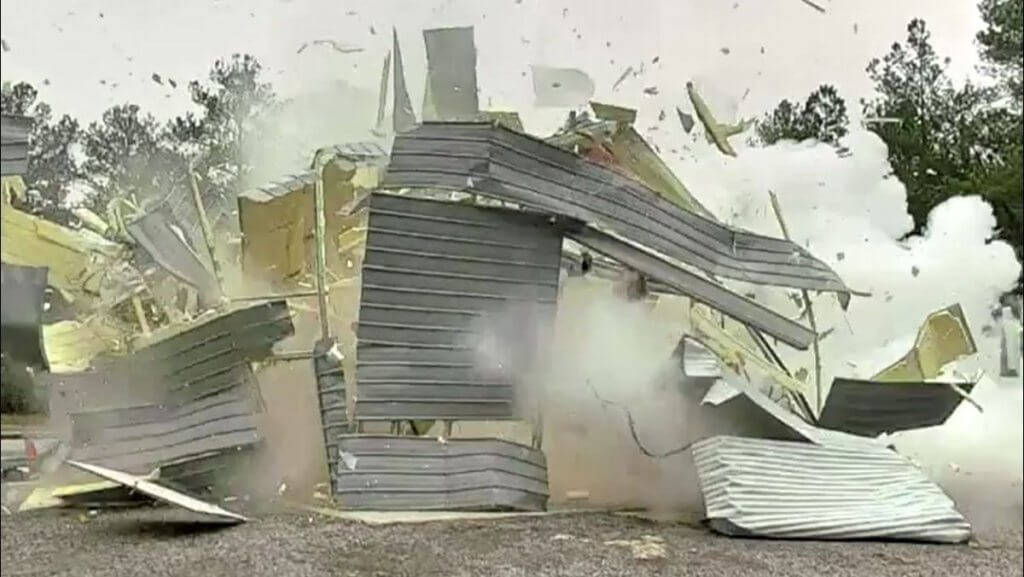Fasten your safety Bat-Belt for another Sierra Space explosion.
Sierra Space finished its fourth (of four) deliberate module explosions in February on the road to certifying the inflatable habitat for an International Space Station (ISS) successor, the Colorado-based company announced (opens in new tab) on Wednesday (March 23). The spectacular video of the explosion is visible above.
A small-scale prototype of Sierra Space’s Large Integrated Flexible Environment (LIFE) module was deliberately blown to pieces after spending a month withstanding high pressures well above what will required of the hardware in space. The testing shows the forthcoming full-scale module can likely stand up to pressurizing for more than 60 years, which is four times the expected 15-year lifespan of the Orbital Reef space station led by Blue Origin, Sierra Space representatives said.
“We are obviously simulating pressures well in excess of the norm,” Shawn Buckley, Sierra Space chief engineer for LIFE, said in the company statement. “Test after extreme test, we continue to exceed our program requirements.”
In photos: Inside Sierra Space’s inflatable space habitat for astronauts in lunar orbit
The month-long accelerated systematic creep test on the one-third scale LIFE module was the first of 2023; more testing is planned in the coming months. Engineers next plan to insert hard structures into the soft pressure shell on a one-third scale module to verify past results, and finally to begin testing on full-scale LIFE habitat prototypes later in 2023.
The Orbital Reef space station is part of a small set of industry-led space station concepts that NASA funded in December 2021, on the road to replacing the aging ISS. NASA has committed to helping operate the ISS until 2030, but how many partners will continue past the current agreement’s end of 2024 is an open question; Russia may leave in 2028, for example.
Related: NASA looks to private outposts to build on International Space Station’s legacy
Sierra Space’s trio of tests before this one included two ultimate burst pressure tests in July and November that subjected test modules to pressure that kept mounting until they blew apart, along with another creep test in December.
All tests were performed at NASA’s Marshall Space Flight Center in Alabama, and Sierra Space plans to keep a presence there. The company also recently announced that it had signed a Space Act Agreement with NASA to “expand its collaborative environment” at Marshall for further LIFE work.
In 2021, NASA provided $415 million to three consortiums for the successor commercial space stations. The Orbital Reef team received $130 million, Nanoracks LLC’s team received $160 million and Northrop Grumman’s team garnered $125.6 million. Certification of all of these designs is ongoing.
The ISS is also hosting an inflatable module right now. The Bigelow Expandable Activity Module, or BEAM, was built by Bigelow Space and arrived at its docking port in 2016. Astronauts do periodic check-ins to see how the module is faring with solar radiation, the space vacuum and other environmental factors.
Elizabeth Howell is the co-author of “Why Am I Taller (opens in new tab)?” (ECW Press, 2022; with Canadian astronaut Dave Williams), a book about space medicine. Follow her on Twitter @howellspace (opens in new tab). Follow us on Twitter @Spacedotcom (opens in new tab) or Facebook (opens in new tab).

